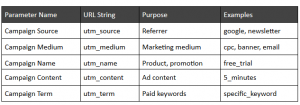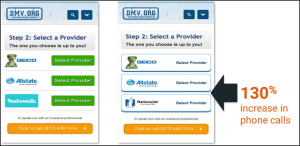Are you deliberately improving your sales skills on a regular cadence?
Sales is one of the most underrated skill sets for agency owners and directors. It doesn’t get anywhere near enough focus.
After all, you’re an expert in marketing… so why should sales matter?
But it does.
Your ability to understand the art and science of the customer’s buying journey and effectively layer a well thought out sales process on top of that journey is critical to closing new business and retaining clients in the long-term.
You need to architect a sales conversation that positions you as a strategic partner and sets clear expectations from day one.
Whether you’re wondering how to sell content marketing services, AdWords management, SEO, social media management, or something else entirely, here are some tips for nailing the agency sales conversation.
Be a strategic partner, not a puppet
You’re selling marketing services… but that’s not what your clients are actually paying for.
They are looking for a strategic partner. Someone that can go into battle for them and accelerate progress towards their hefty growth targets. They are trusting you to be their marketing department and ensure the prosperity of their business. That is a big deal, so don’t take it lightly.
Enter the sales conversation with the mindset of a partnership, not a client-agency service relationship. Get them to believe that you will go into battle for them and are ready and willing to be there for all the ups and downs that are on the road in front of you.
More importantly, use this frame of reference as a sales tool. Tell your prospects that you are starting a partnership. Let them know that you are committed to the long-term success of this partnership and are willing to put your neck on the line in order to achieve results for their business.
But reinforce that whatever high expectations they have for you coming into this partnership, you have high expectations of them too. They need to be all-in and commit to a lengthy partnership so you can get to work and chase the results they want to see.
It’s easy for someone to slash budgets on external services, contractors, and freelancers. But it’s much harder to slash budgets on strategic partners who are embedded in the direction and growth of the business.
Quantify what they care about most
What do your prospects care about most?
Push hard with this question and don’t stop until you have an answer you are happy with. You need an endpoint/future state/finish line that you are working towards. A definition of success that both you and your client are 110% clear about and there is no grey area.
Do they want traffic? Do they want leads? Do they want brand exposure?
It depends on the business, but what they tell you they want is not always what they actually want. For small businesses, it’s almost always about growth and survival. That’s all they care about. For big businesses, you are probably dealing with someone in marketing. What they care about is keeping their job and progressing their career. So you need to deliver outcomes and metrics that help them do those things.
But you can’t just assume that the things each client cares about are going to be the same. You need to ask them. Probe. Probe. Then probe again. Until you have an answer that you believe in.
Say things like this:
- “What would success look like for you? If we were sitting down in six months time, how would you know this had been a good investment?”
- “I want to develop an exchange of value that lasts a long time, but in order to do that, I need to know what matters to you most so that we can deliver on those expectations. What criteria will you be evaluating this relationship on?”
Set clear expectations and under-promise
The expectations you establish during the sales conversation are critical to the long-term health of your client relationship. Too often I see agencies over-promise and set themselves up for failure.
Resist the urge to over-sell the outcomes you can get for a client. It might get them across the line initially, but you’re digging yourself a hole that you will never be able to fight your way out of.
In my experience, people appreciate honesty. It can even be used as a trust-building tactic. The more you push back on clients about the expectations of the engagement, the more it strengthens your position in the relationship. The key is to truly understand exactly where you can and can’t deliver value.
Say things like:
- “Just so we’re clear, Result A, B, and C are your expected outcomes from us working together. Is that right?”
- “You mentioned Result X earlier in the conversation. That’s not usually an outcome we can get for clients because it’s not our area of expertise. What we are good at is getting Results A, B and C. Is that what you are looking for?”
- “Sorry to harp on about it, but I just want to make sure that we are 100% on the same page. Given the opportunity, I want to be able to exceed your expectations.”
Do you see what I’m doing there? You are creating a commitment from the client about what they are actually paying for. What they really care about. It draws out their underlying motivations and allows you to hear them commit to a set of outcomes and expectations that you know you can deliver on.
This is HUGE when it comes to the retention conversation. If you can replay the exact words they said to you at this point in the relationship and tie it to the results you have achieved, it becomes a no-brainer for them to sign a new contract.
Make sure you document it. Send it to them in your official proposal and the supporting email. The more you can reinforce these expectations and get multiple points of commitment from the client, the better chance you have of delivering on their expectations once you get going.
These result-based expectations are the most important ones to set during the sales conversation, but here is a shortlist of other expectations you may want to address too:
- The scope of work. What’s in and what’s out of scope.
- Lead times for turning around work products.
- Roles and accountability for delivering on the agreed outcomes. Who’s in charge of what.
- Appropriate communication channels and time-based expectations for responding to questions.
- Pre-empting potential bottlenecks in their organization that could restrict your ability to achieve the agreed outcomes.
By setting expectations with your clients and defining a very specific goal/outcome/end game, you can promise things that you will be able to achieve 90% of the time. Drop that bar down a notch and promise something a little lower. Then you will never under-deliver and client retention won’t be an issue.
Back winning horses and avoid lead hunters
One thing that agencies absolutely need in order to be successful is proven results. Specific, relevant, and compelling case studies from other businesses you have worked with. Ideally, businesses who are similar to the prospects you are talking to – that’s why picking a niche is important.
The key to getting case studies, again and again, is to pick the right clients. That’s right, YOU are selecting the businesses you will work with, not the other way around. You have a choice.
Choose to work with businesses on a positive trajectory already. Develop a sixth sense and a relentlessness for analyzing the viability of a business opportunity. Are they on the precipice of something special? Ride that wave with them.
This mindset has a couple of knock-on effects when it comes to the sales conversation and your ability to retain clients over time.
- You enter the sales conversation from a position of power because you don’t need new clients, they need you.
- You create more case studies by selecting clients who are already on a positive trajectory with their business and don’t need a huge push to 10x their growth.
Instead of scraping the barrel and working with lead hunters – the small businesses who are using you as their last ditch effort before going into receivership. You position yourself alongside the winning horses and ride their saddle to growth, case studies, and more business. It becomes a cycle.
Bring in multiple stakeholders
Another vital element of the sales conversation is to begin the process of embedding yourself in their organization. Do this by bringing in multiple stakeholders and decision influencers as early as possible. Of course, this is usually done towards the end of the sales conversation when you have already developed rapport and demonstrated value with an internal champion.
Not only will this approach improve your chance of closing the sale, it will also de-risk your relationship with the client for the long-term. Instead of having one point of contact within a client account, you may have three or four influential people all of whom will go into battle for you when it comes to the crunch.
Your job is to understand each of these stakeholders intricately. What makes them tick? Why do they care about working with you, what drives them? How can you understand and fulfill their desires during the proposal, delivery, and retention phase of the relationship?
The more entrenched you become in their business, the stickier your services.
It’s not always easy to do this. Often the internal champion is cautious of bringing in other stakeholders. Maybe they want to own the project, or perhaps they are afraid that you will go over their head and replace their job. You need to get underneath their motivations and discuss what is holding them back. This information will enable you to approach things in an empathetic and compelling way.
Once you know this information, here is a suggested approach you could use to bring in other stakeholders:
- “Is there anyone else that will contribute to this decision? What questions do you think they will have for you about this engagement?”
- “It’s up to you, but it may be worth organizing a time for us all to meet. I’d like the opportunity to understand what they care about most so that we can exceed those expectations, and most importantly, relieve any internal pressure that might fall on you in the future. What do you think?”
Even if you are dealing directly with the business owner, there is no harm in trying to understand who else will help them make this decision. It’s almost never done in isolation.
Conclusion
The need for outsourced marketing services isn’t going away. But a low barrier to entry and an explosion of the reliance on digital means that the agency space is more competitive than ever.
Every chance you have to differentiate yourself or create a competitive advantage in the market you need to grab with two hands. Sales is one area where you have that opportunity. Because most agencies are significantly under-skilled when it comes to prospecting, closing, and retaining business. First and foremost you’re a marketer, but running an agency is more than just about marketing.
Use these tips to position yourself as a strategic partner, charge more for your services, and embed yourself in the growth trajectory of high-performance businesses.
This was originally published on Flypchart.co
Digital & Social Articles on Business 2 Community(57)
Report Post



